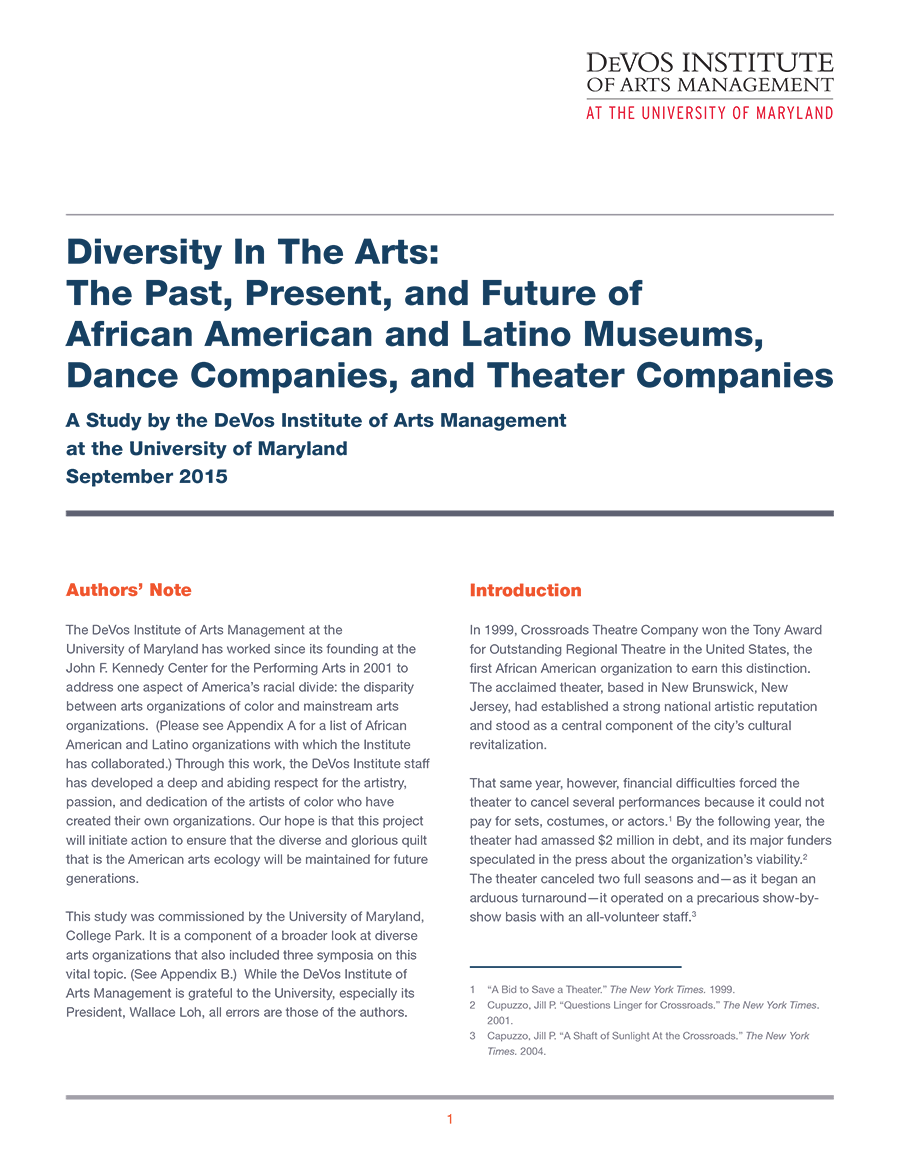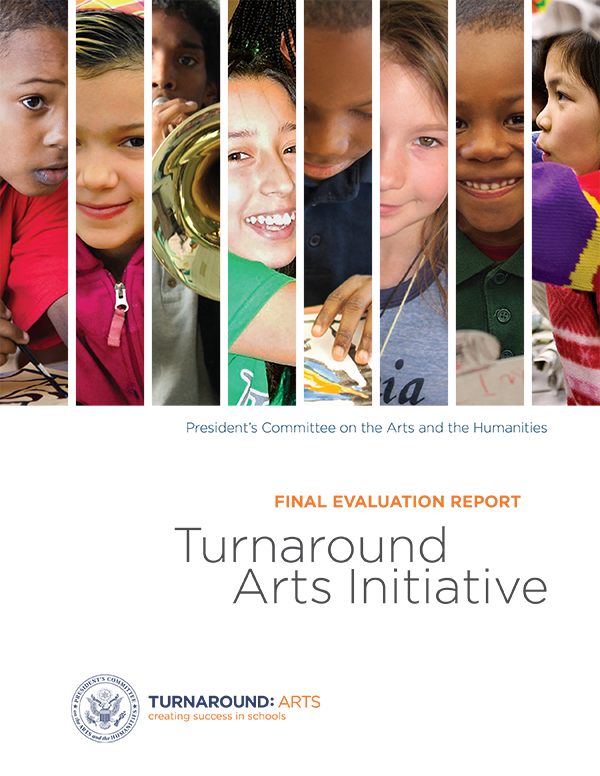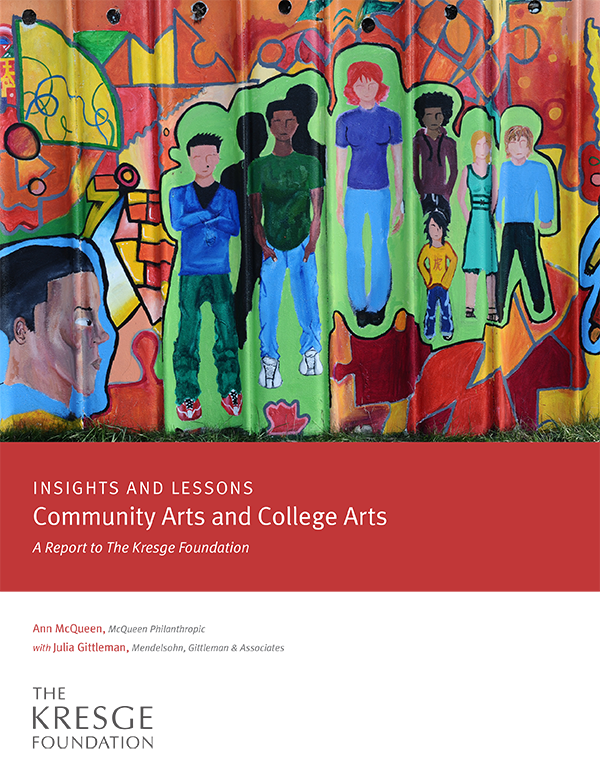Arts and Community Development
In 1980, when I was living in New York City, I had a conversation with a man who at one time was general manager of Lincoln Center. We debated, rather heatedly, his premise that the National Endowment for the Arts should give money only to states that produce “good” art — in other words, New York. (He wasn’t sure other states should get any funding at all.) He believed the federal government should give funds to South Dakota, my home state, for what it does well — grow corn and beef.
Read More...January 2016, 32 pages. Partners for Sacred Places, 1700 Sansom Street, 10th Floor, Philadelphia, PA 19103. (215) 567-3234. sacredplaces.org.
Read More...September 2015, 58 pages. DeVos Institute of Arts Management, 1300 Pennsylvania Ave NW, Suite 410, Washington, D.C. 20004. (301) 314-0963. www.devosinstitute.net.
Download:
Read More...Despite New York City’s status as the dance capital of the United States, rising real estate prices are challenging the city’s ability to serve as a creative incubator, with space — an essential resource for making dance — in waning supply. Choreographers and dancers need to work in a large open area with a sprung floor, but as real estate values climb, long-standing dance studios are being bought by developers and converted into residential or commercial spaces.
Read More...President’s Committee on the Arts and the Humanities, 400 7th St, SW, Washington, DC 20506. (202) 682-5409, pcah.gov.
Download:
Read More...March 2015, 44 pages. The Kresge Foundation, 3215 W. Big Beaver Road, Troy, Michigan 48084, (248) 643-9630, http://kresge.org
Download:
Read More...February 2015, 32 pages. Minnesota Citizens for the Arts, 2233 University Avenue W. #355, St Paul, Minnesota, 55114, (651) 251-0868. creativemn.org.
Download:
Read More...Download:
![]() Redefining Expectations for Place-based Philanthropy (10.2 Mb)
Redefining Expectations for Place-based Philanthropy (10.2 Mb)
This article discusses how The California Endowment has used a midcourse strategic review to refine Building Healthy Communities, aiming to provide insight for other place-based initiatives and to add to the body of knowledge about how to support transformative community change.
Read More...Even folks entirely unfamiliar with the concept of creative placemaking intuitively grasp the potential for artist spaces to catalyze revitalization, and mural projects to animate vacant walls. The usual mental backdrops, however, are down-and-out urban neighborhoods.
Read More...



